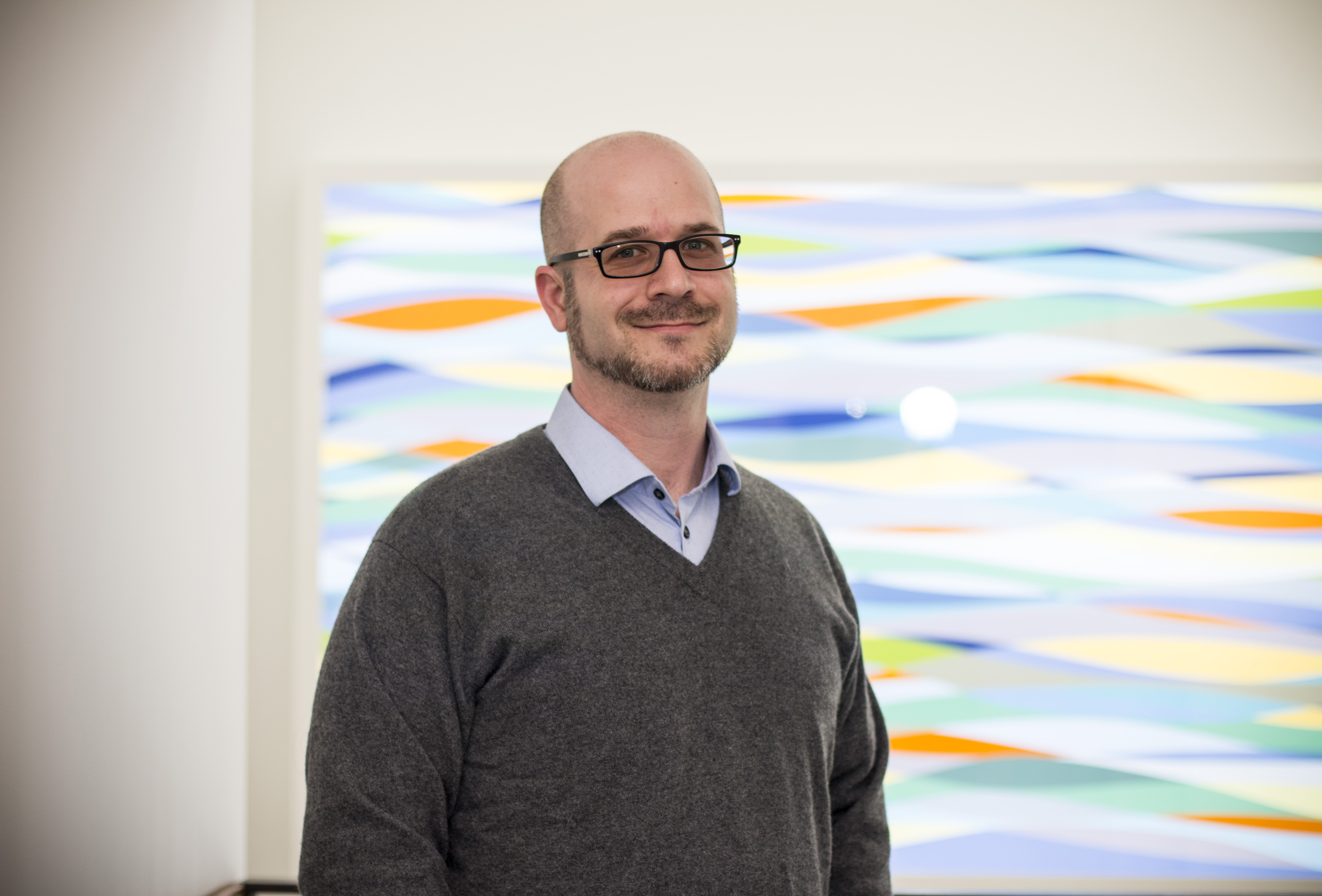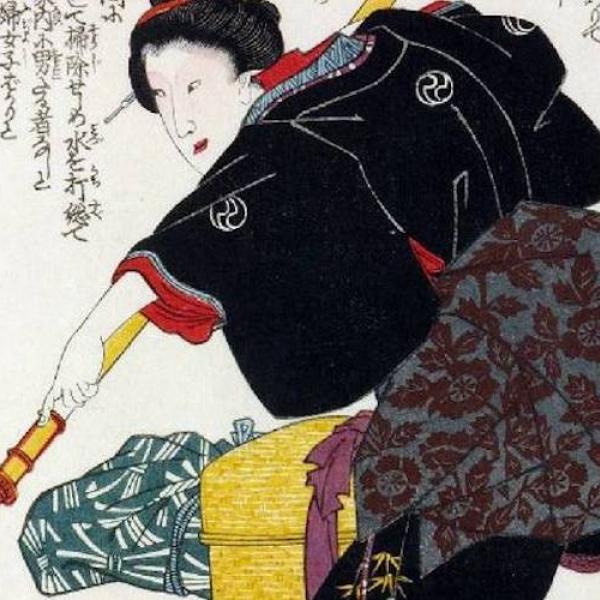What can an ancient debate about an elephant tell us about the history of medicine? To find out, step into the life and times of Galen of Pergamum. Though his name is not commonly recognized today, Galen's writings influenced medical theory and practice for centuries. Luis Salas studies Greek and Roman medicine and philosophy, in particular the works of Galen. Here, Salas shares a fascinating and revealing story about Galen, his rivals, and the heart of an elephant.
Transcript:

Claire Navarro (host): Thanks for listening to Hold That Thought. I’m Claire Navarro. In today’s episode we’re going to hear a fascinating and strange story about an argument, an elephant, and one of history’s most important physicians – someone you may have never heard of before. To tell the story and help us understand its place in history of medicine, we’re joined by Luis Salas.
Luis Salas (guest): My name is Luis Salas. I'm an assistant professor of classics at Washington University in St. Louis.
CN: Salas studies ancient medicine and philosophy – we’re talking Greeks and Romans – and he spends a lot of his time thinking about the writings of one man who lived some 1,800 years ago – Galen of Pergamon. Way back in the day, Galen was a physician, a doctor. And not just any physician.
LS: He becomes the imperial physician to a Roman emperor called Marcus Aurelius, and he is then appointed to be imperial physician to Marcus Aurelius's son, Commodus.
CN: You might recall Commodus as the creepy emperor played by Jouquin Phoenix in the movie Gladiator. But for scholars like Salas, Galen isn’t just remembered as the physician of emperors. He’s remembered as a thinker and a writer. He wrote a lot.
LS: He's got some 22,000 pages of surviving Greek.
CN: That’s more than double any ancient author before him – more than 5 times what we have from Plato. So he wrote a huge amount, but more important than the word count is what he wrote in those 22,000 pages. It wasn’t just a log of every time Marcus Aurelius got a cold. Galen wrote about anatomy, he wrote about philosophy, and he also acted as sort of a medical historian, recording and commenting on the medical knowledge that came before him.
LS: So often other authors are largely or even wholly preserved in the Galenic corpus, sort of like he's this amber in which these these fragments survive. And that's to good and bad effect. Like in amber, things that would otherwise be lost end up surviving in Galen. But the fact that the fragments survive in Galen's writing means that we have to read them through his lenses.
"Like in amber, things that would otherwise be lost end up surviving in Galen. But the fact that the fragments survive in Galen's writing means that we have to read them through his lenses."
CN: This is true for unknown authors who would have been forgotten without Galen, and in some ways it’s also true for people who in today’s world have a lot more name recognition than Galen himself does – people like Aristotle and Hippocrates. It’s Hippocrates who is credited with the famous theory of humors – blood, phlegm, black bile, and yellow bile.
LS: This is this is often the bit of ancient medicine that we know about if we know anything about ancient medicine in a contemporary context, and this theory is not a Hippocratic theory really. It's a product of Galen as a reader of the Hippocratic corpus. Now that's not to say that you don't find humors in the Hippocratic corpus, or even that you don't find these four in the Hippocratic corpus, but they're not central, and it's certainly impossible to say that there's something like a Hippocratic theory of humors. That arises out of Galen, and then becomes Hippocrates for us.
CN: So that’s a little bit about Galen and why he’s so important to the history of medicine, but I know what you’re thinking. Didn’t you promise a story about an elephant? It’s coming! I promise. We had to talk about Galen first, because he’s the main character of the story, and also he’s the one who tells the story. Right in the middle of one of those many, many pages of medical text – a pretty technical treatise the heart – Galen suddenly breaks out of character and gets a little personal. Here’s what happens.
LS: Galen tells us about this sort of Sharks and Jets throwdown that goes down, from like West Side Story.
CN: West Side Story is a musical that was made into a movie, and the sharks and jets are competing street gangs. So according to Galen’s story, he was just walking down the streets of Rome one day, when suddenly…
LS:01:50] He runs into a group of rival physicians, and naturally they get into a debate about the body - among among other things about whether or not there is a bone at the center of the heart.
CN: Galen believes that the heart does have a bone. His rivals, we’ll call them the Jets, thinks that there is no such bone.
LS: So Galen lampoons these physicians for doubting that there is a bone, and he provides some evidence. There are animals that do have heart bone.
CN: Specifically oxen, an animal Galen had dissected and written about before. But the Jets didn’t believe him. This is where things get a little weird.
LS: According to the story ,Galen summons an elephant's heart from the kitchens of Caesar. So already it's unusual in that, right? That there's an elephant that's getting diced up in Caesar's kitchen.
CN: So Galen’s helpers go fetch the elephant heart and bring it to Galen and his rivals. They’re still in the middle of the street here.
LS: And Galen shows them the bone, and off they run tail between their legs. And Galen tells us, the readers, that he defeats his rivals in the streets of Rome and proves how ignorant they are. And to this day, he says, the writing of the text, to this day the bone sits like a paperweight on his desk, and it's sitting by him as he writes right now.
CN: You may have thought that this story was a little strange once the elephant’s heart came out of Caesar’s kitchen, but to get the punch line, the really crazy part, you have to know a little bit about elephant anatomy.
LS: What's especially striking as I dug into the story is that it turns out that elephants don't have this bone. So whatever whatever Galen saw it was not a bone at the center of the elephant's heart, because they don't have one.
CN: Wait - what? Why would Galen go out of his way like this to prove something that wasn’t true? Salas became more and more interested in this question.
LS: Does he see something that's not there? Did he see some sort of some sort of structure, maybe some sort of plaque? Did he see a bone itself? The more I started digging, the more I came to the view that he's got all sorts of reasons to see a bone there.
"Does he see something that's not there? Did he see some sort of some sort of structure, maybe some sort of plaque? Did he see a bone itself? The more I started digging, the more I came to the view that he's got all sorts of reasons to see a bone there."
CN: To understand those reasons, we have to try to get inside Galen’s head and understand how he viewed the natural world. When Galen was living and writing, there was a lot of overlap between medicine and philosophy – that’s actually part of what got Salas so interested in studying the history of science and medicine in the first place. And in Galen’s philosophical worldview, the structure of an object – how it’s built – can tell you a lot about that object’s purpose – what it’s built to do.
LS: Galen has a view of the world that is what's called teleological. That is that the world is goal-structured. So if you find a hand - and the hand is a favorite example of his -you look at the structure of a hand, and the hand is especially good for doing stuff. And you can be confident in the fact that when you find natural objects, that based on their structure you could say something about what they do.
CN: Looking at it another way, if you know what an object is supposed to do, you can probably predict something about its structure. This brings us back to the elephant’s heart. Galen had dissected animals. He had also studied and written a lot about bodies and medicine. So he did know something about how hearts work.
LS: It is clear to Galen that its function is muscle-like. And so it's got to strain against something, and the view is, well, look, if it's got a strain against something than it needs some sort of support. And the idea is that in smaller animals the support can just be tough tissue, but in larger animals, the larger the animal gets the tougher the tissue has got to be. And so you take elephants, which are the largest animal that he's aware of at this point, and it's got to be the toughest sort of structure that you can imagine. And so it becomes bone.
CN: So basically, everything Galen believes about how the world works and how hearts work points him to the fact that there should, in fact, be a bone inside the elephant’s heart. But that doesn’t fully explain the story. Did he actually confront the jets in the streets of Rome? Was there actually an elephant’s heart in Caesar’s kitchen?
LS: One easy answer. It may not be the right one, but one easy answer, is to suppose that he's really just talking about oxen, and if you like he's spicing things up quite a bit by talking about the oxen as an elephant. It's just a really big ox, if you like. And the fact that there is that embellishment is not relevant to the underlying fact of the matter, which is just that the world is structured in such a way, and hearts have to function in such a way, so of course there's a structure. Have I seen it? No. Do I have to? Not really. Why? Because I've got all of this empirical evidence that tells me that this is how the world ought to operate. And so I can make certain predictions.
CN: To further make sense of this story, there’s still another big question to think about – and that’s why. Leaving aside for a second whether the story was an exaggeration or even whether it happened at all, why would Galen choose to write about it? To begin to answer that question, we have to think about the other characters in the story. The rivals. The Jets.
LS: So one of the things that I'm interested in research-wise is identifying who his targets are, how he's targeting them, and why.
CN: There are a surprising number of possibilities. In Galen’s time, there were no medical schools, no certifying boards, no degrees, no licenses. So pretty much anyone could say they were physician, and there were lots of competing ideas floating around. This is a lot different than the way we think about medicine today.
LS: In contemporary American life we generally have one system of medicine. That is, there is this sort of authoritative brand of medicine if you like: Western biomedicine, standard medicine. In the second century, we've got a lot of competing sects they're called, sort of schools of thought. And sometimes their views are dramatically different about the nature of disease, about the nature of bodies, how diseases are communicated. And these sects might differ in practice, and they might even differ in fundamental theoretical commitments - deep ones, ones that emphasize the overlap between medicine and philosophy that we frequently get in antiquity. Debates about the nature of observation; what counts as knowledge; what count as legitimate scientific claims; what are illegitimate scientific claims.
"In contemporary American life, we generally have one system of medicine ... In the second century, we've got a lot of competing sects."
CN: Among these debates, one stood out in this time period. The debate was about the heart, but it was a much bigger question than whether or not the heart has a bone in it. These different sects had different ideas about human identity and the body. Which part of the body houses human intelligence? Where is the control center? Some groups believed it was the heart, others believed it was the brain.
CN: According to Salas, in the Sharks vs. Jets throwdown, the jets were on the other side of this debate.
LS: Galen is what's called an Encephalocentrist. He believes that the control center is in the brain. So in this context, I think we can safely say the following about his rivals. These are people who believe that the heart is the seat of - it's the control center, if you like. It's the seat of identity, of decision making, and so on.
CN: This is likely part of the reason why Galen felt the need to prove his rivals wrong, and do it in this over-the-top dramatic way. It was never really Sharks vs. Jets. It was heart vs. brain. If he could prove that the other side didn’t understand how the heart is built, he was that much closer to proving that they were also wrong about what the heart does.
LS: This is one of the fundamental, one of the sort of defining debates that differentiates these medical sects, these groups in the second century. So for Galen to stake out the position that he does and to undermine the other position - it's not just to argue with this particular group of people in the streets, or figured as being in the streets. It's really taking on a fairly major ideological position in a larger philosophical debate.
CN: So maybe Galen wasn’t right about the elephant’s heart, but time and his own experiments did eventually help settle the heart vs. brain question, and taking down his rivals in the streets of Rome – whether or not it actually ever happened – is one chapter in that history. Salas finds this whole episode fascinating because it shows how personal beliefs and historical context can affect research and the production of knowledge. And that, he believes, is something that in some ways continues to be true – even almost 2,000 years later.
LS: One general takeaway I have got from the the history of of medicine and science is how often social factors end up influencing the sorts of theories that very clever people generate. I'm often interested in the sorts of social factors that influence what Galen sees theoretically, and I think that an awareness of how it is that historical factors affect the production of theory might encourage us as moderns to be less confident all the time. The view that somehow we are, that science is, the accrual of layer upon layer of knowledge until you get to where we're at - and we are this positive logical endpoint of thousands of years of this sort of linear progress - I think this view is historically false. That doesn't seem to be the way that science and medicine function. And I think that's a healthy attitude to have about research. It's not just that there's this constant linear progression, but that research works in fits and starts, that there are lateral movements, that there are social factors that often determine the avenues down which research will go. That's not to suggest that we don't make advances. That's not that's not to deny what modern medicine does. It's just a useful corrective, I think, to the view that we are historically unique.
"One general takeaway I have got from the the history of of medicine and science is how often social factors end up influencing the sorts of theories that very clever people generate."
CN: Many thanks to Luis Salas for joining Hold That Thought. This was the first in series of episodes on health and healing, so stay tuned for more in the coming weeks. As always, you can find more ideas to explore on our website: Hold that Thought.wustl.edu. Thanks for listening.
Credits:
Wikimedia Commons.
Free Music Archive: Broke for Free, Transient, Chris Zabriskie, Jared C. Balogh, Podington Bear




